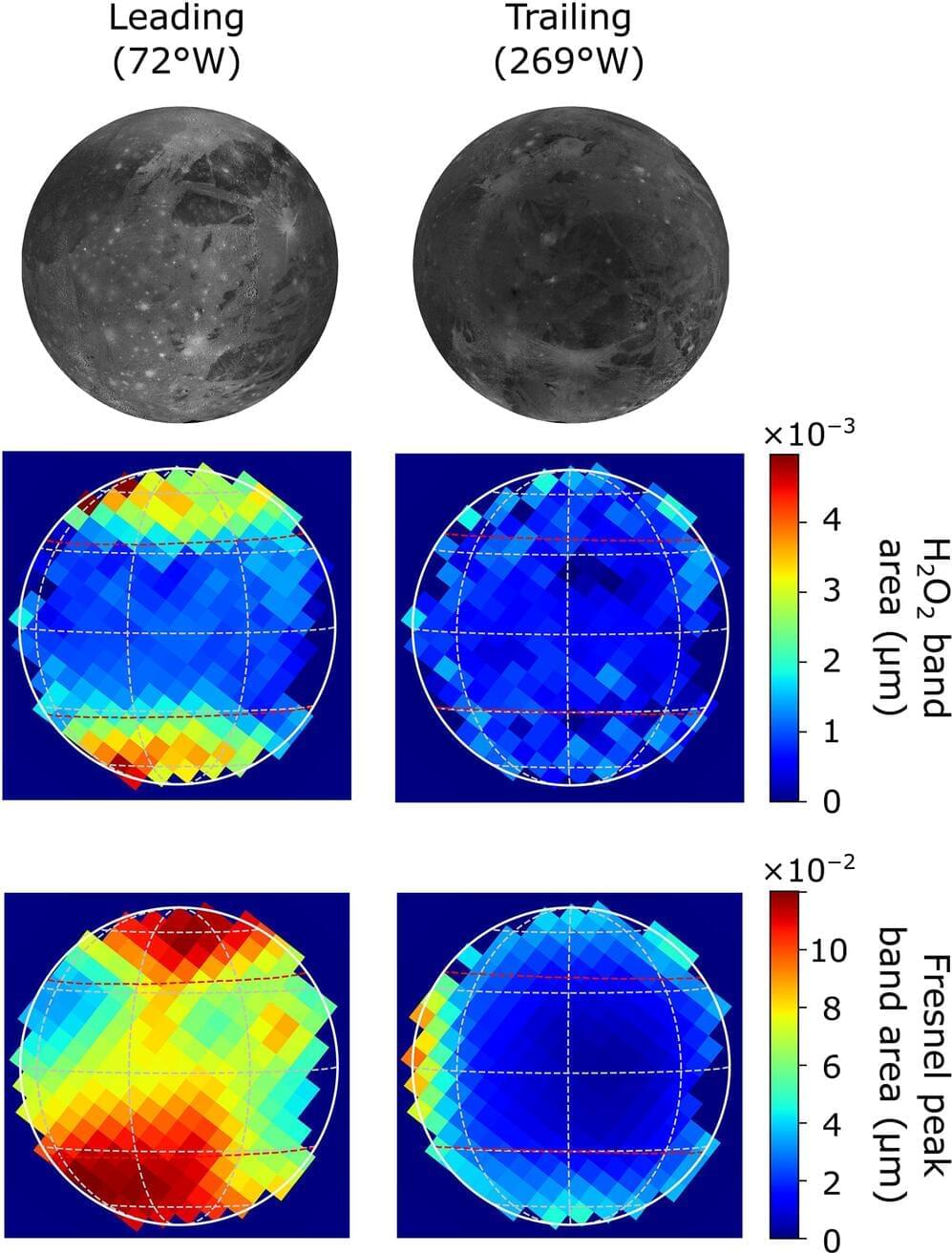An international team of space scientists has found evidence that hydrogen peroxide on Ganymede, Jupiter’s largest moon, exists only on its higher latitudes. For their research, reported in the journal Science Advances, the group studied data from the James Webb Space Telescope (JWST).
For many years, researchers theorized that hydrogen peroxide existed on Ganymede, but it took a prior team studying data from the JWST to find it. In this new effort, the research team analyzed new data sent back by the telescope to learn more about the surface of the moon and its hydrogen peroxide.
Ganymede is the largest moon in the solar system, but it has not received nearly the attention given to another of Jupiter’s moons, Europa, whose features and characteristics make it far more likely to have harbored life at some point in time. But prior research has shown that the influence of Jupiter’s magnetic field on many of its moons could indicate a strong probability of hydrogen peroxide on Ganymede. This is because of its likely impact on the water-ice irradiation process on its surface.
